Vimar ELVOX 41528 Handleiding
Vimar
Niet gecategoriseerd
ELVOX 41528
Bekijk gratis de handleiding van Vimar ELVOX 41528 (24 pagina’s), behorend tot de categorie Niet gecategoriseerd. Deze gids werd als nuttig beoordeeld door 24 mensen en kreeg gemiddeld 4.8 sterren uit 12.5 reviews. Heb je een vraag over Vimar ELVOX 41528 of wil je andere gebruikers van dit product iets vragen? Stel een vraag
Pagina 1/24

Manuale installatore - Installer guide
Manuel installateur - Technisches Handbuch
Instrucciones instalador - Manual do instalador
Εγχειρίδιο οδηγιών-
STEELY
Targhe citofoniche/videocitofoniche serie Steely
Steely series entryphone and video entryphone panels
Platines interphones/portiers-vidéo série Steely
Audio-/Video-Klingeltableaus Serie Steely
Placas de portero automático/videoportero serie Steely
Botoneiras áudio/vídeo série Steely
Μπουτονιέρες θυροτηλέφωνου/θυροτηλεόρασης σειράς Steely
Steely /

Descrizione
Le Placche della serie Steely permettono la composizione di targhe per impianti citofonici e videocitofonici con tecnologia
Due Fili Plus.
Installabili in modalità da incasso parete tramite le apposite scatole da incasso antistrappo: 41592 (2 moduli), 41593 (3 moduli), e
41594 (4 moduli).
Le placche sono fornite di telaio e sono da completare con scatole da incasso, eventuali placche supplementari, unità elettronica e
relativi componenti aggiuntivi forniti separatamente da scegliere in funzione del tipo di impianto.
L’istruzione si riferisce al solo montaggio della targa, per l’installazione completa, il collegamento e la programmazione,
fare riferimento al manuale dell’unità elettronica.
Caratteristiche tecniche
• Grado di protezione IP54
• Grado di protezione contro gli impatti IK08 (ad eccezione delle placche Audio/Video per unità elettronica alfanumerica 41540 e
41541: IK07).
Installazione
Procedura per l’installazione:
1. Installare la scatola da incasso antistrappo ad una altezza di circa 1,65 m, oppure 1,20 per accessibilità ai disabili, dal bordo
superiore della scatola al pavimento (Fig. 1).
- Si deve installare la scatola nel corretto verso di montaggio seguendo l’idicazione indicazione
UP
che si trova sul fondo della
scatola.
- Se l’installazione richiede l’abbinamento di più scatole, utilizzare le apposite barrette di giunzione e viti fornite in dotazione,
per unirle insieme (Fig. 4).
- Murare le scatole facendo passare i tubi per i cavi attraverso gli appositi fori laterali, praticabili grazie alle predisposte prefrat-
ture sfondabili.
2. Fissare sotto il telaio portamoduli la morsettiera dell’unità elettronica, per mezzo delle viti in dotazione (fig. 5).
3. Fissare il telaio portamoduli alla scatola per mezzo delle viti fornite in dotazione (fig. 6).
4. Collegare la morsettiera dell’unità elettronica all’impianto seguendo gli schemi di collegamento nel manuale di riferimento a
seconda del tipo di impianto.
5. Collegare l’unità elettronica alla morsettiera per mezzo del cablaggio presente nel lato superiore dell’unità elettronica stessa.
6. Collegare gli eventuali moduli supplementari (dove previsto):
- Nel caso di targa a pulsanti tradizionali, collegare gli eventuali moduli supplementari; si collegano uno di seguito all’altro per
mezzo dei cablaggi forniti con i moduli e si collegheranno inne all’unità elettronica base tramite il cablaggio presente nel lato
inferiore della stessa.
- Nel caso di installazione di targhe supplementari con cartello luminoso portanomi (Art. 41542), collegare le schede di illu-
minazione a LED Art. R260.B (fornite installate nei telai) alla morsettiera dell’unità elettronica, come indicato nelle varianti di
collegamento presenti nel manuale dell’unità elettronica.
7. Inserire nei telai, l’unità elettronica e gli eventuali moduli supplementari (utilizzare l’intramezzo fornito con i moduli supplementari
per mantenerli uniti).
8. Collegare il microfono inserito nell’apposita sede, nel lato inferiore destro del telaio, all’unità elettronica (fig. 7).
9. Effettuare le configurazioni e la programmazione dei parametri della targa, tramite i tasti dei moduli elettronici oppure collegando
un PC e utilizzando il software di gestione del sistema.
10. -Nei frontali con pulsanti o frontale targa portanomi, andranno alloggiate le etichette cartellini portanome dove è possibile stam
pare i nominativi. Per l’estrazione dei cartellini, agire sul retro della placca, effettuare una leggera pressione con le dita per
togliere il fermacartellino posto sul lato posteriore del modulo a pulsanti (Fig. 10)
11. Chiudere la targa fissandola alla scatola (Fig. 8).
Il manuale istruzioni è scaricabile dal sito www.vimar.com
2 IT
STEELY

Description
The Steely series cover plates are used to create panel compositions for door entry and video door entry systems using
Due Fili Plus technology.
Can be flush mounted using the specific rip-proof flush mounting boxes: 41592 (2 module), 41593 (3 module), and 41594 (4 module).
The cover plates are supplied with frame and must be completed with flush mounting box, any additional cover plates, electronic unit
and relative additional components supplied separately, chosen according to the type of system.
The instructions refer only to mounting the panel, for full installation, connection and programming, please refer to the
electronic unit manual.
Technical characteristics
• Protection class: IP54
• IK08-rated for protection against impact (except for Audio/Video cover plates for alphanumeric electronic units 41540 and 41541:
IK07).
Installation
Installation procedure:
1. Install the rip-proof flush-mounted box at a height of approx. 1.65 m, or 1.20 m for accessibility for the disabled, from the upper
edge of the box on the ground (Fig. 1).
- The box must be installed in the correct mounting direction following the indication
UP
found on the bottom of the box.
- If installation requires the use of several boxes, use the special connection bars and screws provided to join them together
(Fig. 4).
- Set the boxes into the wall, passing the cable ducts through the special holes in the sides (use the knockouts created for this
purpose).
2. Secure the module-holder frame to the electronic unit terminal block using the screws supplied (fig. 5).
3. Secure the module-holder frame to the box using the screws supplied (fig. 6).
4. Connect the terminal block of the electronic unit to the system, following the wiring diagrams in the reference manual depending
on the type of system.
5. Connect the electronic unit by means of the wiring on the upper section of the electronic unit.
6. Connect any additional modules (if used):
- When using conventional push button panels, connect any additional modules; they should be connected one after the other
by means of the wiring supplied with the modules, and nally connected to the standard electronic unit by means of the wiring
in its lower section.
- In the case of installation of additional panels with luminous name plates (Art. 41542), connect the LED lighting boards Art.
R260.B (supplied installed in the frames) to the terminal block on the electronic unit, as indicated in the connection variants
shown in the electronic unit manual.
7. Insert the electronic unit and any additional modules in the frames (use the connector supplied with the additional modules to
secure them together).
8. Connect the microphone inserted in its seat, in the lower right hand side of the frame, to the electronic unit (fig. 7).
9. Configure and programme the panel parameters, using the buttons on the electronic modules or by connecting to a PC and using
the system management software.
10. Where it is possible to print name labels, these must be tted in the front panels with buttons or the name holder plates. To
remove the labels, press lightly on the back of the cover plate to remove the label holder on the rear of the button module (Fig.
10)
11. Close the panel and fix it to the box (Fig. 8).
The instructions manual can be downloaded from the website www.vimar.com
3
EN
STEELY
Product specificaties
| Merk: | Vimar |
| Categorie: | Niet gecategoriseerd |
| Model: | ELVOX 41528 |
Heb je hulp nodig?
Als je hulp nodig hebt met Vimar ELVOX 41528 stel dan hieronder een vraag en andere gebruikers zullen je antwoorden
Handleiding Niet gecategoriseerd Vimar
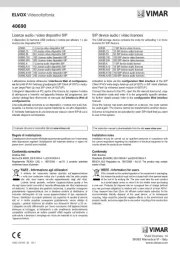
2 September 2025
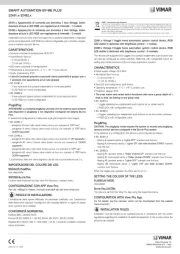
26 Augustus 2025
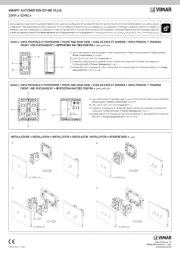
26 Augustus 2025
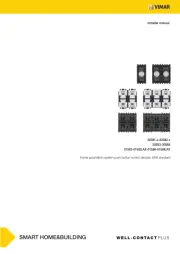
26 Augustus 2025
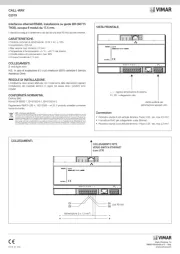
14 Augustus 2025
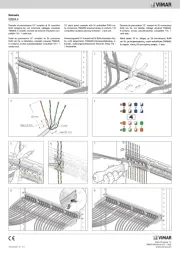
5 Juli 2025
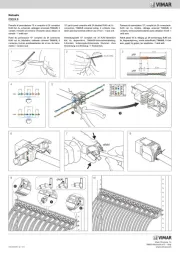
5 Juli 2025
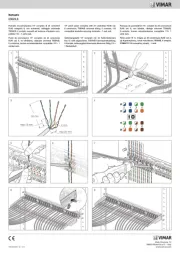
5 Juli 2025

5 Juli 2025
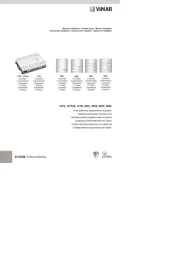
24 Mei 2025
Handleiding Niet gecategoriseerd
- Ovente
- Youin
- Simrad
- XTRARM
- AVPro Edge
- After Later Audio
- Ave Six
- Heinner
- Bitspower
- Foscam
- Speco Technologies
- Crock-Pot
- Sortimo
- Reflexion
- SingularXYZ
Nieuwste handleidingen voor Niet gecategoriseerd
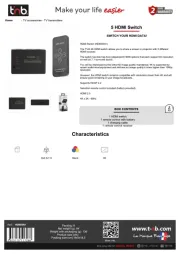
15 September 2025
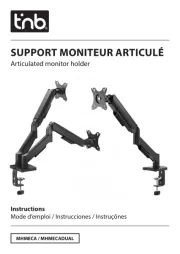
15 September 2025

15 September 2025
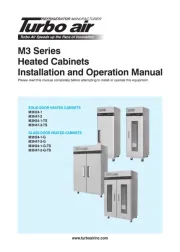
15 September 2025
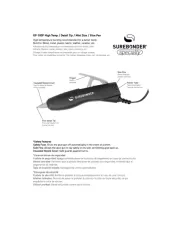
15 September 2025

15 September 2025

15 September 2025

15 September 2025
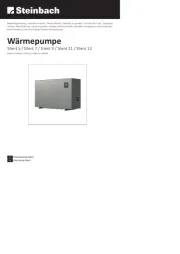
15 September 2025
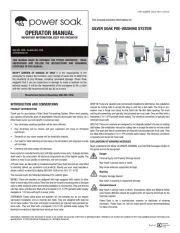
15 September 2025